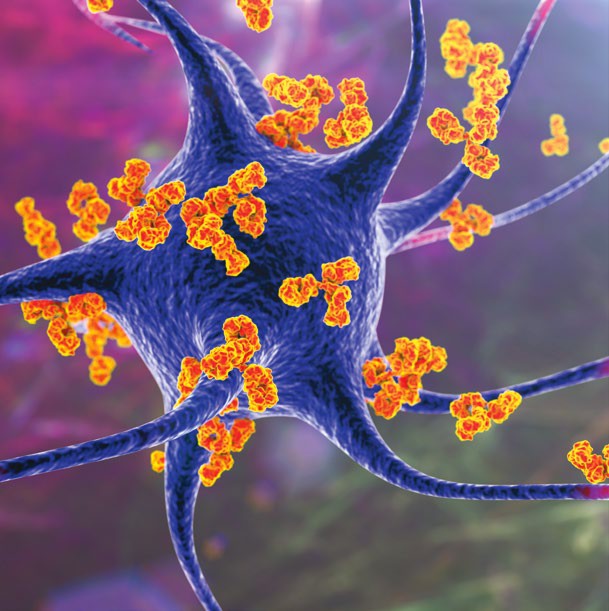ES

An illustration of immune cells attacking a healthy nerve cell
WHEN THE IMMUNE SYSTEM TURNS ON ITSELF
Sometimes the human immune system misinterprets healthy tissue as invading pathogens and sets out to remove it. In a typical immune response, T cells release cytokines that instruct other immune cells when and where to attack and when to fall back. But sometimes this cellular communication goes wrong and the immune cells can’t correctly identify what’s a pathogen and what’s healthy tissue, which leads to the development of autoimmune diseases such as lupus and rheumatoid arthritis.
There are more than 100 known autoimmune diseases, some more serious than others. Multiple sclerosis, for example, is a chronic disease of the central nervous system caused by an autoimmune response. Instead of solely fighting invading pathogens, immune cells attach to nerve cells and prevent them from sending electrical signals to and from the brain. It’s still unclear why autoimmune diseases develop and what causes the immune system to stop recognising healthy tissue. However, scientists have made some connections between autoimmune diseases and possible triggers, such as an immune response to an infection like strep throat that can lead to the development of an autoimmune disease like psoriasis.
Injury or damage to a part of the body may also trigger the development of a disease such as psoriatic arthritis, which affects the joints. Along with some environmental factors, genetics may also play a pivotal role in the development of some autoimmune diseases.